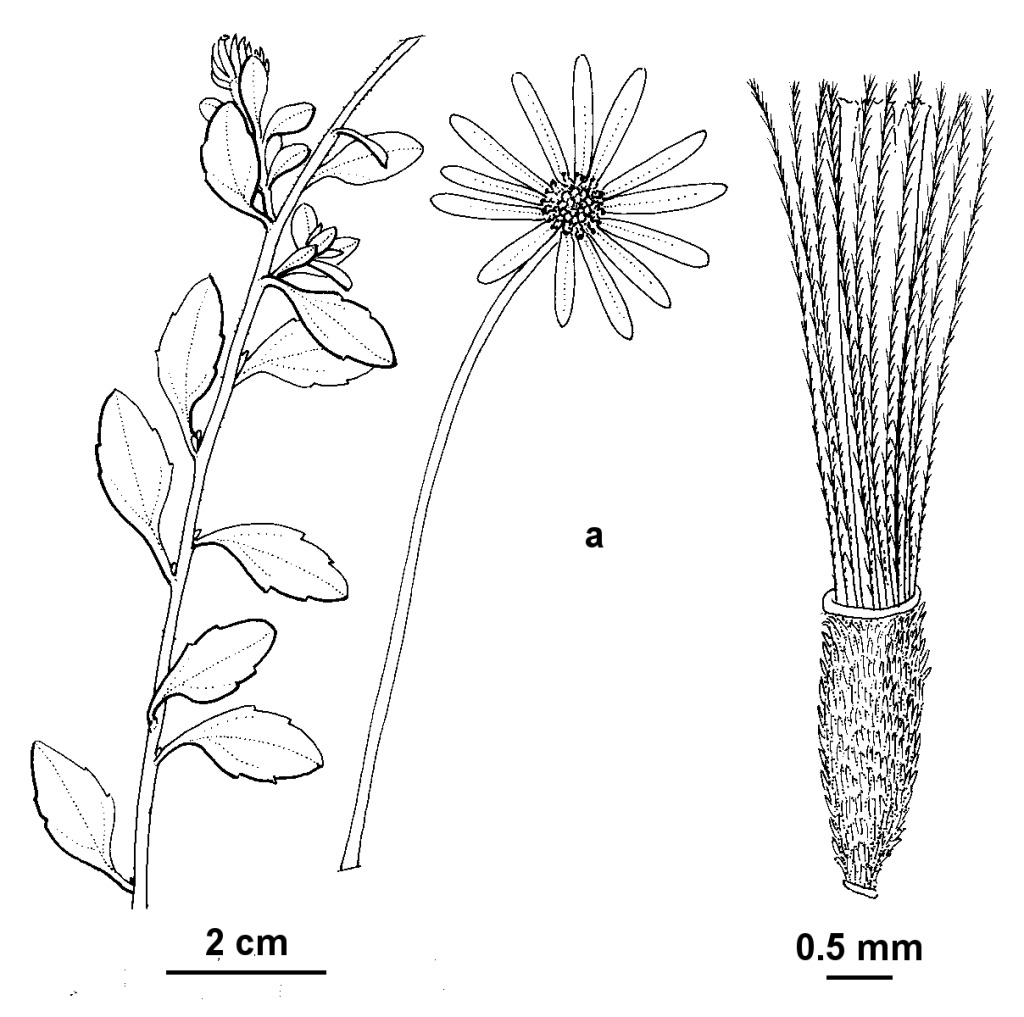Felicia
Annual or perennial herbs or shrubs. Leaves usually alternate, sometimes opposite, entire to toothed. Capitula usually solitary on long peduncles; involucral bracts in 1–4 rows, herbaceous. Ray florets female, in 1 row, usually bluish (rarely white or yellow); style branches smooth to papillose; disc florets bisexual (rarely functionally male), corolla 5-lobed, yellow; anthers obtuse at base, with a short, acute, membranous terminal appendage; style branches papillose near apex. Cypselas uniform, flattened, usually pubescent with non-glandular, often notched hairs, marginal ribs thickened; pappus bristles in a single series (rarely absent from ray florets), free, barbellate, persistent or sometimes caducous.
About 85 species, mainly from southern Africa but extending to Nigeria, Ethiopia and Saudia Arabia; widely cultivated, 2 species weakly naturalised.in Australia.
Felicia tenella (L.) Nees was collected by Mueller from ‘Port Phillip’ prior to 1865 and his collection became the type specimen of Erigeron minurioides Benth. Bentham tentatively named E. minurioides as an Australian native, suspecting correctly that it may have been ‘some Cape plant accidentally introduced’ (probably with ship’s ballast).
Walsh, N.G. (1999). Felicia. In: Walsh, N.G.; Entwisle, T.J., Flora of Victoria Vol. 4, Cornaceae to Asteraceae, pp. 833–834. Inkata Press, Melbourne.
 Spinning
Spinning

